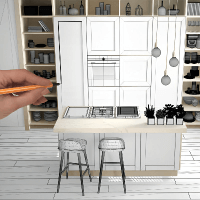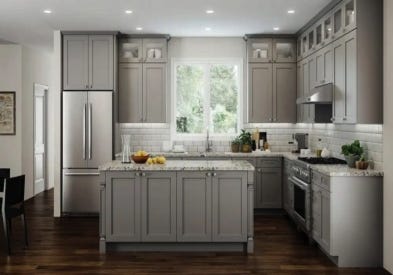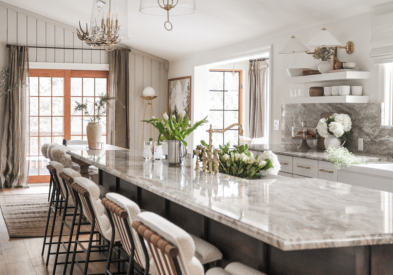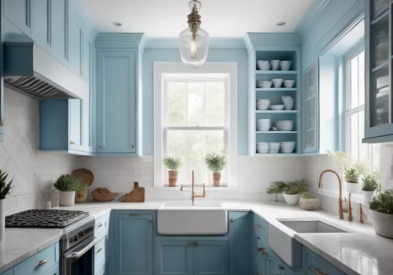One of the toughest issues to deal with in the construction and design industries is miscommunication. We all know this can wreak havoc on even the happiest of business relationships. However, it’s not uncommon to face this issue when multiple people are working together to coordinate large, expensive projects.
For as much as we would all love to avoid this, mix-ups are inevitable. Are you interested in finding a better way to work with your customers? Let's explore some great ways to prevent miscommunications and, if necessary, helpful tips to remedy a mistake.


Setting Proper Expectations With Your Client
The easiest way to miscommunicate is by not setting proper expectations. This comes easier for some than others, but it’s important to lay the groundwork to simplify interactions in the future. Learn what is important to your customers first, then talk about your core values or your mission statement so they know more about you and your brand. By doing this, it shows you care about people and helps your client get to know you personally.
Put yourself in the buyer's shoes. They don’t know you or your work that well. This client will likely pay you thousands of hard-earned dollars and might be nervous about choosing the right pro to complete their project. Confirming you are thoughtful, that you will take care of them and good for your word will go a long way. Here are six ways to go the extra mile and make sure everyone is on the same page.
1. Detailed Preliminary Meetings
At the beginning of the project, sit down and talk through every detail. This should include timeline, budget, design preferences, inspiration photos, and what your client expects to receive in the form of a finished product.
Talk to them about best and worst-case scenarios and typical remodeling issues so they aren’t blind-sided if something arises. Sometimes customers can have expectations that don’t work within their budget, so if you find their needs are not lining up, let them know.
2. Talk About the Budget
Budgeting can be a touchy subject with some clients. Talk to them about what they can afford and show customers what is realistic to achieve. Sometimes design dreams take people further than their money will allow, so be up front and honest. Come up with positive alternatives that could help them get a similar look.
Being transparent about potential costs will help your clients trust you quickly and appreciate the way you work. Doing business this way might also get you more referrals because customers like your honesty.
3. Share Inspirational Photos
As you discuss the overall vision, have your client send you 3-5 photos that truly display what they are dreaming about. Ask them questions for clarification and be willing to exchange ideas while they share their inspirational photos with you. If a preference is unclear, ask them to clarify what they like about the photo specifically to give you a better understanding. Make sure you mention the potential impact on their budget with each design element as well, so they have a realistic view of costs.
4. Take Notes
When your clients are going through the vision for their kitchen remodel, take thorough notes. Not only can this save you when you’re in a pinch to remember what they wanted, but it can act as an informal agreement or acknowledgement. Write everything down as it’s discussed, then have your client review and sign this document. This can easily diffuse any future back-and-forth disagreements and create clarity while moving forward.
5. Always Be Honest
The easiest way to avoid conflict is to get it all out on the table. Always be transparent and request the same from your client. If something comes up, for example, you find structural issues in their home, mold, or outdated electrical, tell them right away.
Another great example is the kitchen layout. In the excitement of preliminary planning, maybe a client adds a kitchen island that's too large or puts a cooktop under a working window. Tell your clients if their layout won’t work right away. Focus on benefits to them. Positive views could sound like, 'I want to make sure your walkways are up to code’, or ‘I want your beautiful new appliances to open properly and function for you’.
6. Final Design Approval & Installation Meeting
Offer your clients a final meeting before making all the large kitchen purchases. Whether in-person or virtual, this is a great opportunity to cover every final detail and get on the same page. Talk about the whole design like final cabinet storage selections, finishes, cabinet door styles, lead times and installation day. Once everything is covered, provide some time for them to ask any final questions before hitting ‘submit’. This will give them confidence and prevent buyer's remorse.
Simple Ways to Remedy a Mistake
Since no one is perfect, mistakes are inevitable. For as much as everyone tries, there are bound to be mix-ups in communication or execution. If you realize you made a mistake, here are some recommendations.


- Address it honestly right away. Customers appreciate transparency and will trust you more if you admit mistakes to them right away.
- Be willing to talk via video calls or in-person if possible. Doing this builds trust and your customer will feel better since you’re not ‘hiding’ anything.
- Do more listening than talking and stay neutral. Research has shown that heated arguments cool down if one person keeps their voice neutral.
- Frame the issue in a positive light. No one likes dealing with a negative attitude. Positive interactions and sincere apologies keep the project moving and the homeowner hopeful.
- Make it right. If you made an honest mistake, own up to it and fix it. Your client will see you have integrity and be thankful they chose you as their trusted professional.
- Give them chocolate or a discount- it never hurts. Sending them a ‘goof-up gift’ will show you are apologetic and have a sense of humor.
Always look for ways to prevent and remedy unpleasant experiences. If you lead with customer needs first, your customers and business will benefit in the long run. Contact a CliqStudios designer to get started on your next project today!














